Urban living often comes with limited outdoor space, but balconies offer a unique opportunity to grow plants, vegetables, and flowers—even in small apartments. One of the most practical and attractive solutions for maximizing balcony space is the use of balcony rail planters. These planters attach securely to railings, allowing you to utilize vertical space efficiently while adding greenery and aesthetic appeal.
This article explores how to use balcony rail planters for extra space, covering types of planters, placement strategies, plant selection, care tips, and creative design ideas for maximizing both utility and beauty.
1. Understanding Balcony Rail Planters
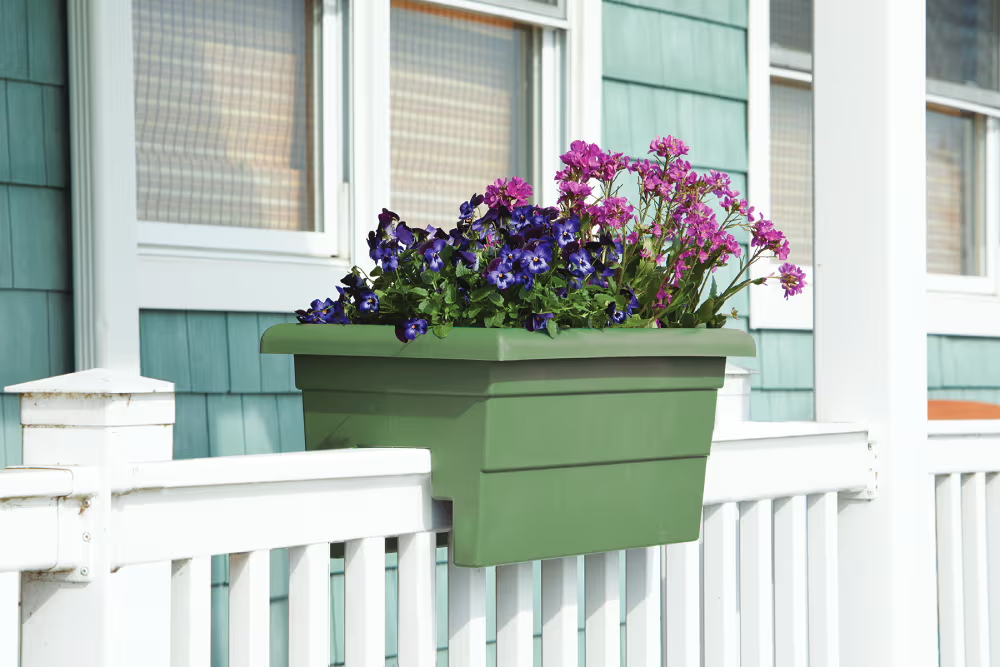
Balcony rail planters are containers designed to hang over or attach to balcony railings. They come in a variety of materials, shapes, and sizes, offering flexibility for different gardening needs:
- Materials: Plastic, metal, ceramic, wood, or fiberglass. Plastic is lightweight and water-resistant, while metal and wood offer durability and aesthetic appeal.
- Attachment Types: Hook-on, clamp-on, or modular systems. Ensure a secure fit to prevent accidents.
- Sizes: Small, medium, and long trough-style planters are available depending on space and railing strength.
- Drainage: Most have built-in drainage holes or require a liner with holes to prevent waterlogging.
Balcony rail planters are ideal for urban gardeners seeking efficient use of limited space while maintaining safety and style.
2. Choosing the Right Planter for Your Balcony
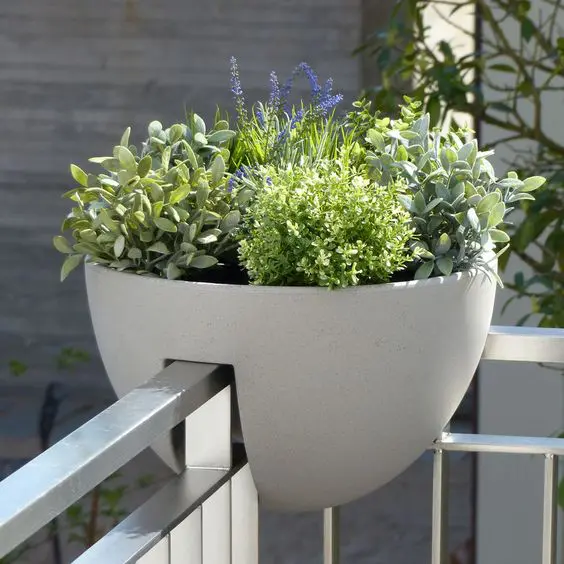
Selecting the right planter depends on several factors:
- Railing Size and Strength: Ensure the railing can support the planter’s weight, including soil, plants, and water.
- Sunlight Exposure: Choose planter material that can withstand direct sunlight or extreme weather conditions.
- Plant Type: Deep-rooted plants may require taller planters, while shallow-rooted herbs and flowers need less depth.
- Aesthetic Preference: Match planters with balcony decor; wooden or painted metal planters can enhance visual appeal.
The right choice ensures safety, longevity, and an optimal environment for plants to thrive.
3. Placement and Arrangement Strategies
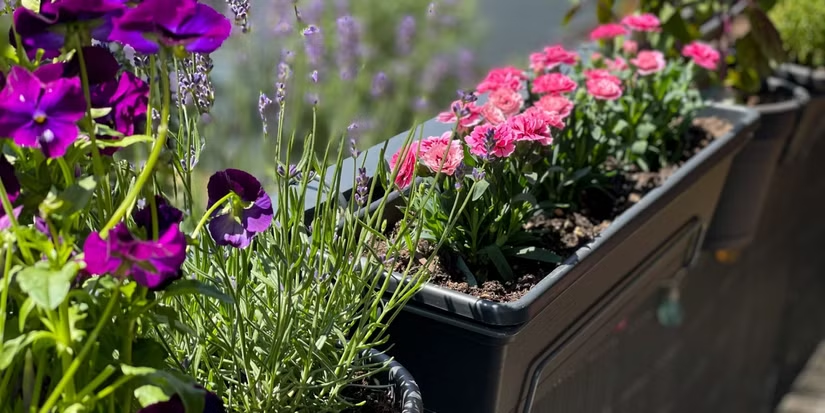
Proper placement maximizes both space and plant health:
- Sunlight Consideration: Position planters on the side that receives appropriate sunlight for chosen plants (e.g., herbs may need 6–8 hours, shade-loving plants less).
- Accessibility: Ensure planters are easy to reach for watering, pruning, and harvesting.
- Even Weight Distribution: Avoid concentrating heavy planters on a single section of the railing to prevent structural strain.
- Layered Arrangement: Combine balcony rail planters with floor pots or hanging baskets for a vertical garden effect.
Thoughtful placement improves plant growth, accessibility, and balcony aesthetics.
4. Soil and Drainage Considerations
The success of balcony rail planters relies heavily on soil quality and drainage:
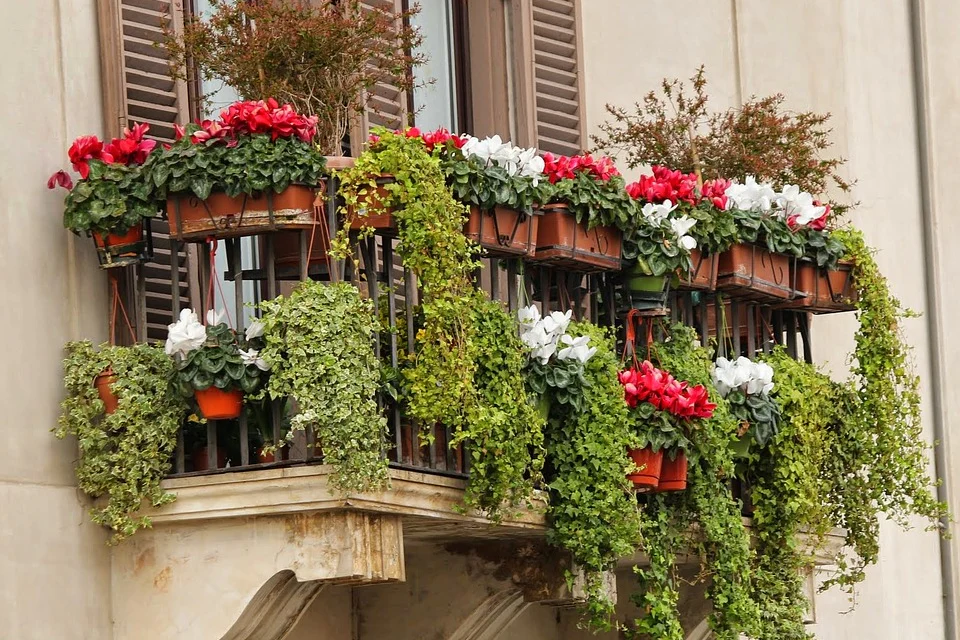
- Well-Draining Soil: Use a lightweight potting mix blended with perlite or vermiculite to prevent waterlogging.
- Moisture Retention: Mix in coconut coir or compost to retain adequate moisture for longer periods.
- Drainage Holes: Ensure planters have holes at the bottom. Excess water should drain freely to prevent root rot.
- Water Catch Trays: Place small trays under planters to catch runoff, protecting balcony floors.
Proper soil and drainage are crucial for healthy, thriving plants in limited-space containers.
5. Selecting Plants for Balcony Rail Planters
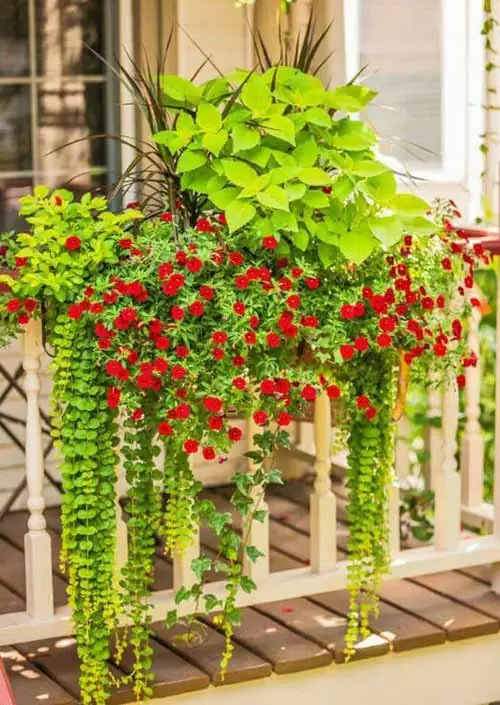
Plant selection is key for maximizing space and ensuring visual appeal:
a. Herbs and Edibles
- Basil, Mint, Parsley, Thyme: Compact growth, high yield, and convenient for cooking.
- Chili Peppers and Lettuce: Provide fresh vegetables without taking up floor space.
b. Flowers
- Petunias, Geraniums, Pansies, Marigolds: Add vibrant color and can cascade beautifully over the railing.
- Trailing Flowers: Lobelia, Bacopa, or Nasturtium create a flowing, lush appearance.
c. Succulents and Cacti
- Sedum, Echeveria, or Aloe: Require minimal soil, water, and maintenance. Perfect for sunny balcony spots.
d. Vertical Climbing Plants
- Sweet Peas or Morning Glories: Can be trained along railing and trellis for extra height and space utilization.
Choosing a mix of trailing, compact, and vertical plants ensures maximum use of vertical and horizontal space.
6. Efficient Watering Techniques
Watering balcony rail planters efficiently is critical due to their limited soil volume:
- Drip or Soaker Systems: Provides water directly to roots, reducing waste and runoff.
- Self-Watering Inserts: Some rail planters come with reservoirs that gradually feed water to plants.
- Mulching: Small layers of mulch retain moisture and reduce evaporation.
- Watering Schedule: Check soil moisture frequently; small containers dry out faster than ground soil.
Efficient watering maintains plant health while preventing overwatering or runoff onto neighbors’ balconies.
7. Fertilization Tips
Potted plants rely on added nutrients since they cannot access deep soil:
- Slow-Release Fertilizers: Feed plants steadily for several weeks.
- Liquid Fertilizers: Apply every 2–3 weeks for leafy growth and flowering.
- Organic Options: Compost tea or diluted fish emulsion supports sustainable growth.
- Avoid Over-Fertilizing: Too much fertilizer can burn roots or encourage excessive foliage at the expense of flowers or fruit.
Regular feeding ensures vibrant growth and higher yield in balcony rail planters.
8. Seasonal and Climate Considerations
Balcony gardens require adaptation to changing weather:
- Hot Summer: Ensure adequate watering and provide shade cloth if needed.
- Cold or Frost: Move planters to sheltered locations or use frost protection covers.
- Wind Exposure: Heavy winds can dry out soil quickly and damage plants; consider windbreaks or sturdy planters.
Adjusting care according to season maximizes plant survival and productivity.
9. Creative Design Ideas for Balcony Rail Planters
Balcony rail planters can be used creatively to maximize space and visual appeal:
- Herb Rail Garden: Dedicate one side to culinary herbs for easy access while cooking.
- Vertical Flower Wall: Combine multiple planters in a tiered arrangement for a living wall effect.
- Edible Balcony: Grow vegetables like cherry tomatoes, lettuce, or chili peppers along the railing for fresh harvests.
- Mixed Planting: Combine flowers and trailing plants for color, texture, and cascading greenery.
- Themed Planters: Choose a color scheme, fragrance theme, or seasonal flowers for aesthetic impact.
Creative arrangements can transform small balconies into lush, productive, and visually appealing spaces.
10. Maintenance Tips
Regular maintenance ensures balcony rail planters remain healthy and attractive:
- Pruning: Trim dead or yellow leaves and prune trailing plants to maintain shape.
- Pest Control: Inspect plants for pests like aphids or spider mites and treat naturally if needed.
- Soil Refreshing: Replace the top layer of soil or repot plants annually to provide fresh nutrients.
- Cleaning Planters: Wash planters and trays to prevent algae and mold buildup.
- Support Structures: Use small stakes or trellises for heavy fruit-bearing plants like cherry tomatoes.
Routine care prolongs planter life, supports plant health, and maintains balcony aesthetics.
11. Benefits of Using Balcony Rail Planters
Utilizing balcony rail planters offers numerous advantages:
- Maximized Space: Ideal for small balconies, freeing up floor space for seating or larger pots.
- Enhanced Aesthetics: Cascading flowers or lush greenery improve balcony appearance and ambiance.
- Improved Air Quality: Plants filter dust and toxins, creating a healthier living environment.
- Easy Harvest: Herbs and vegetables grown at railing height are easy to access.
- Stress Reduction: Greenery in urban spaces promotes relaxation and mental well-being.
Balcony rail planters combine functionality, beauty, and sustainability in limited spaces.
Conclusion
Balcony rail planters are a versatile solution for urban gardeners seeking to maximize limited space while growing vibrant plants. By carefully selecting planters, plants, soil, and placement, you can create a thriving balcony garden that is both productive and visually appealing. Efficient watering, regular fertilization, seasonal adjustments, and maintenance ensure healthy growth and a continuous display of greenery or fresh produce.
From cascading flowers and aromatic herbs to compact vegetables and succulents, balcony rail planters allow gardeners to make the most of vertical and horizontal space, turning even the smallest balcony into a lush, productive garden. By combining smart design, proper care, and creativity, balcony rail planters can transform an urban outdoor area into a green sanctuary that maximizes both space and style.
